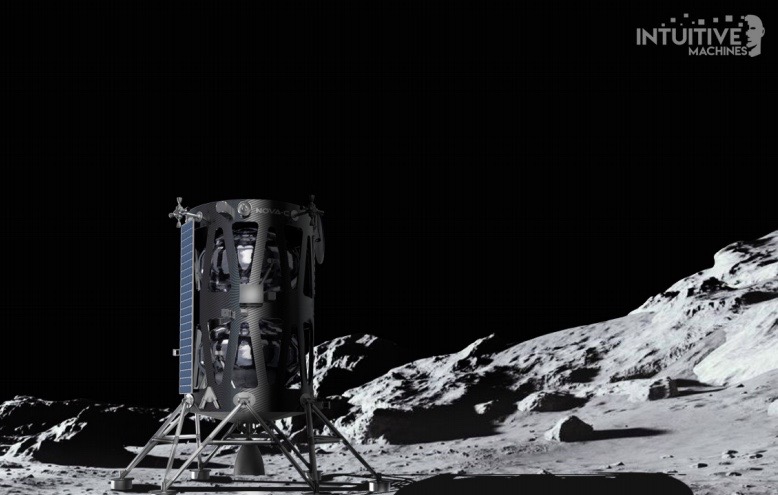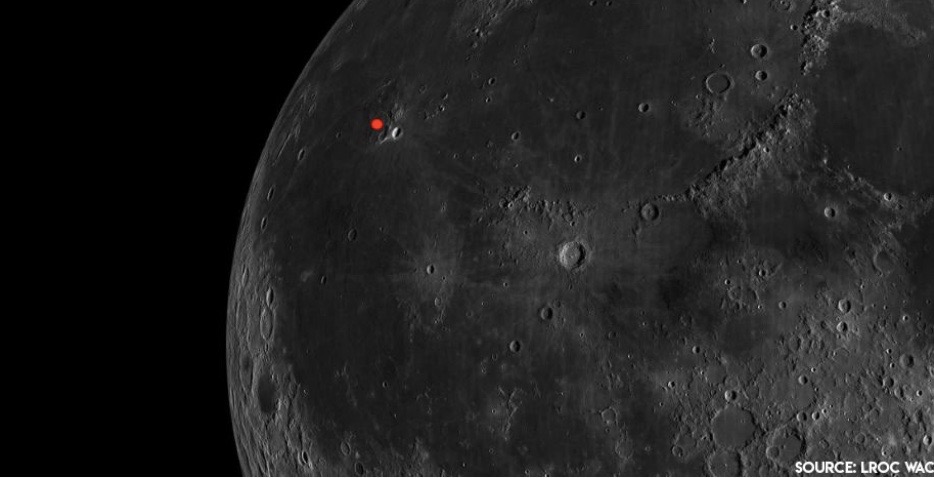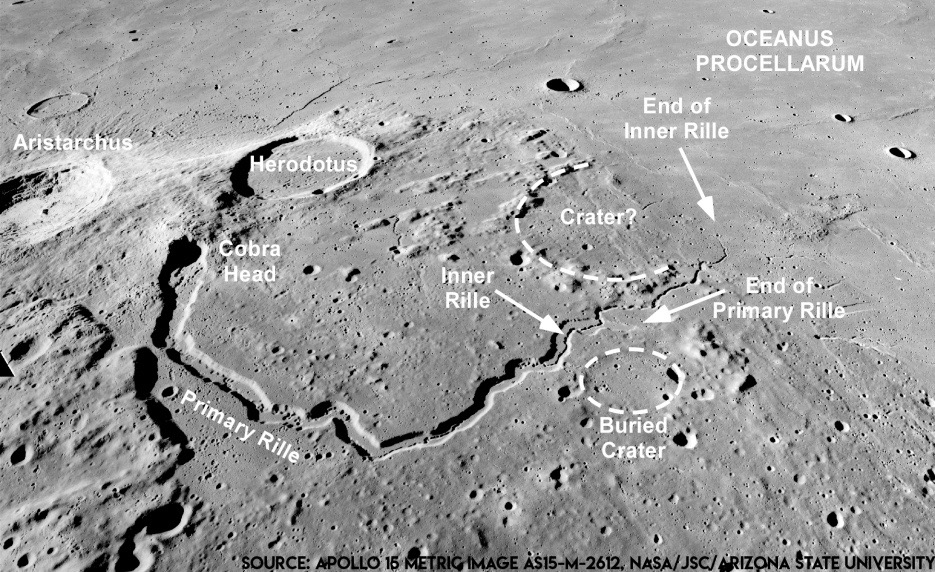Intuitive Machines targets vast 'Ocean of Storms' valley for private moon lander in 2021

A private moon lander's first flight in 2021 has come into much sharper focus.
The robotic Nova-C spacecraft built by Intuitive Machines will touch down near Vallis Schröteri, the largest valley on the moon, on its initial delivery mission for NASA in October 2021, company representatives announced today (April 13).
Vallis Schröteri is surrounded by Oceanus Procellarum, the "Ocean of Storms," which is the largest of the moon's many maria. The maria are dark basaltic plains that looked like oceans to early astronomers, which explains their name. ("Maria" is Latin for "seas.")
Related: Here's where commercial landers will land on the moon for NASA
The Nova-C team studied the region in great detail, eventually identifying a suitable landing site. The chosen area is flat, largely free of boulders and other hazards and will offer plentiful sunlight to the solar-powered Nova-C for 14 days, representatives of Houston-based Intuitive Machines said.
"This kind of lunar landing assessment hasn’t been done since the 1972 Apollo [17] mission," Intuitive Machines president and CEO Steve Altemus said in a statement. "The tremendous effort our team has put forth to fully characterize our descent approach, landing site options and lighting conditions to ensure mission success is a paramount task required to fulfill our obligation to our private payload customers and NASA."
The landing will come six days after liftoff, which is scheduled to take place atop a SpaceX Falcon 9 rocket on Oct. 11, 2021, from NASA's Kennedy Space Center in Florida.
Breaking space news, the latest updates on rocket launches, skywatching events and more!
Related: NASA's full plate of moon missions before astronauts can go
Nova-C will fly under a $79.5 million contract Intuitive Machines signed with NASA's Commercial Lunar Payload Services (CLPS) program in 2019. The private lander will deliver five NASA experiments and a number of commercial payloads to the lunar surface, Intuitive Machines representatives said.
CLPS is designed to pave the way for NASA's Artemis program of crewed lunar exploration, which aims to land two astronauts near the south pole in 2024 and establish a sustainable human presence on and around the moon by the end of the decade. For example, NASA's CLPS payloads include instruments that will assess stores of lunar water ice, a key resource for any crewed outpost.
Intuitive Machines isn't the only company with a CLPS delivery contract. Pittsburgh-based Astrobotic got a similar deal in 2019 and will fulfill it using a lander called Peregrine in 2021. A third company, Orbit Beyond, also won a CLPS contract in 2019 but subsequently dropped out.
And the pool of robotic landers that NASA might employ is much deeper still. A dozen companies, including heavyweights SpaceX and Blue Origin, are eligible to bid on CLPS delivery contracts.
- Moon rush: these companies have big plans for lunar exploration
- Moon master: an easy quiz for lunatics
- Astrobotic's private moon lander will launch on a Vulcan Centaur rocket in 2021
Mike Wall is the author of "Out There" (Grand Central Publishing, 2018; illustrated by Karl Tate), a book about the search for alien life. Follow him on Twitter @michaeldwall. Follow us on Twitter @Spacedotcom or Facebook.
OFFER: Save 45% on 'All About Space' 'How it Works' and 'All About History'!
For a limited time, you can take out a digital subscription to any of our best-selling science magazines for just $2.38 per month, or 45% off the standard price for the first three months.

Michael Wall is a Senior Space Writer with Space.com and joined the team in 2010. He primarily covers exoplanets, spaceflight and military space, but has been known to dabble in the space art beat. His book about the search for alien life, "Out There," was published on Nov. 13, 2018. Before becoming a science writer, Michael worked as a herpetologist and wildlife biologist. He has a Ph.D. in evolutionary biology from the University of Sydney, Australia, a bachelor's degree from the University of Arizona, and a graduate certificate in science writing from the University of California, Santa Cruz. To find out what his latest project is, you can follow Michael on Twitter.



